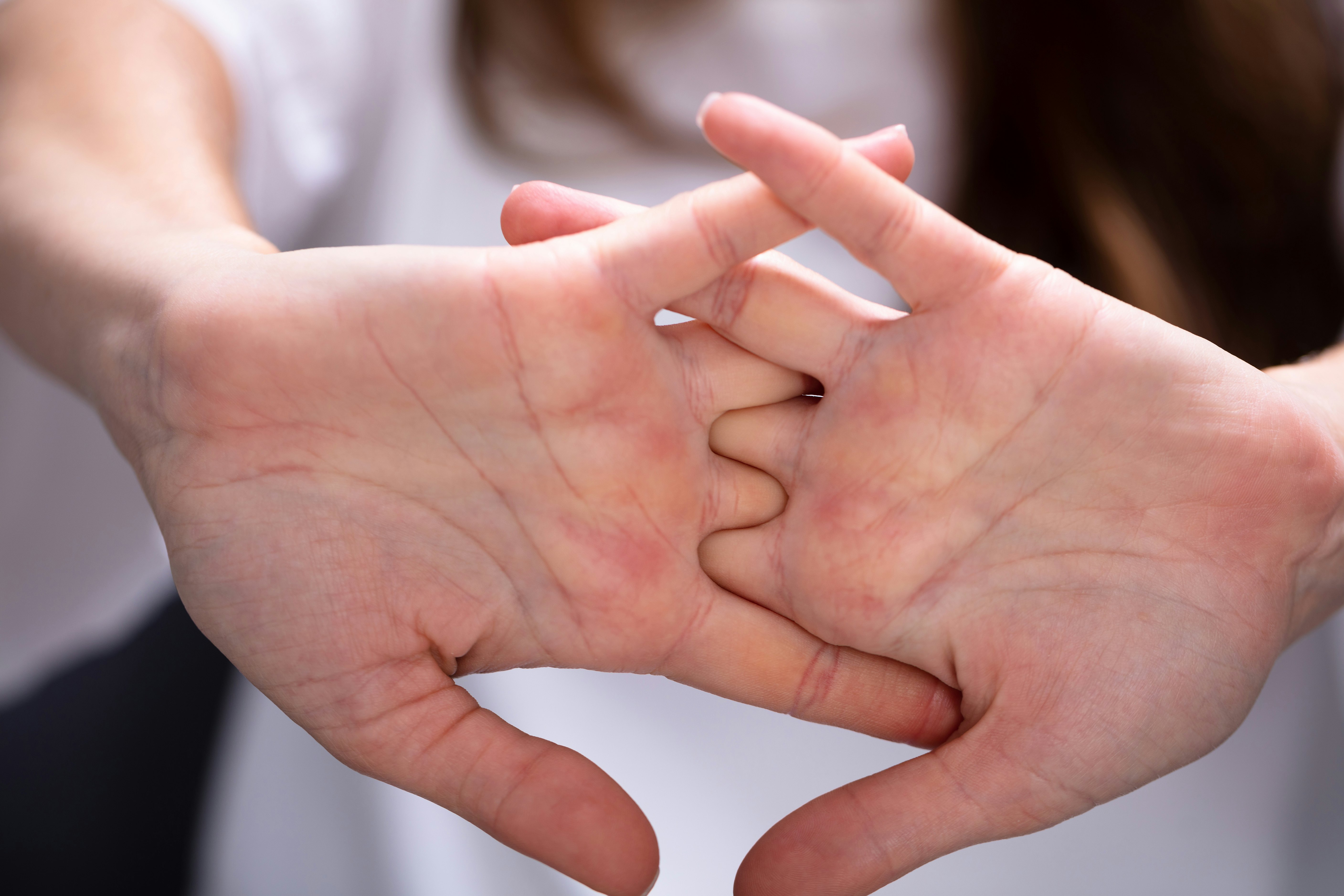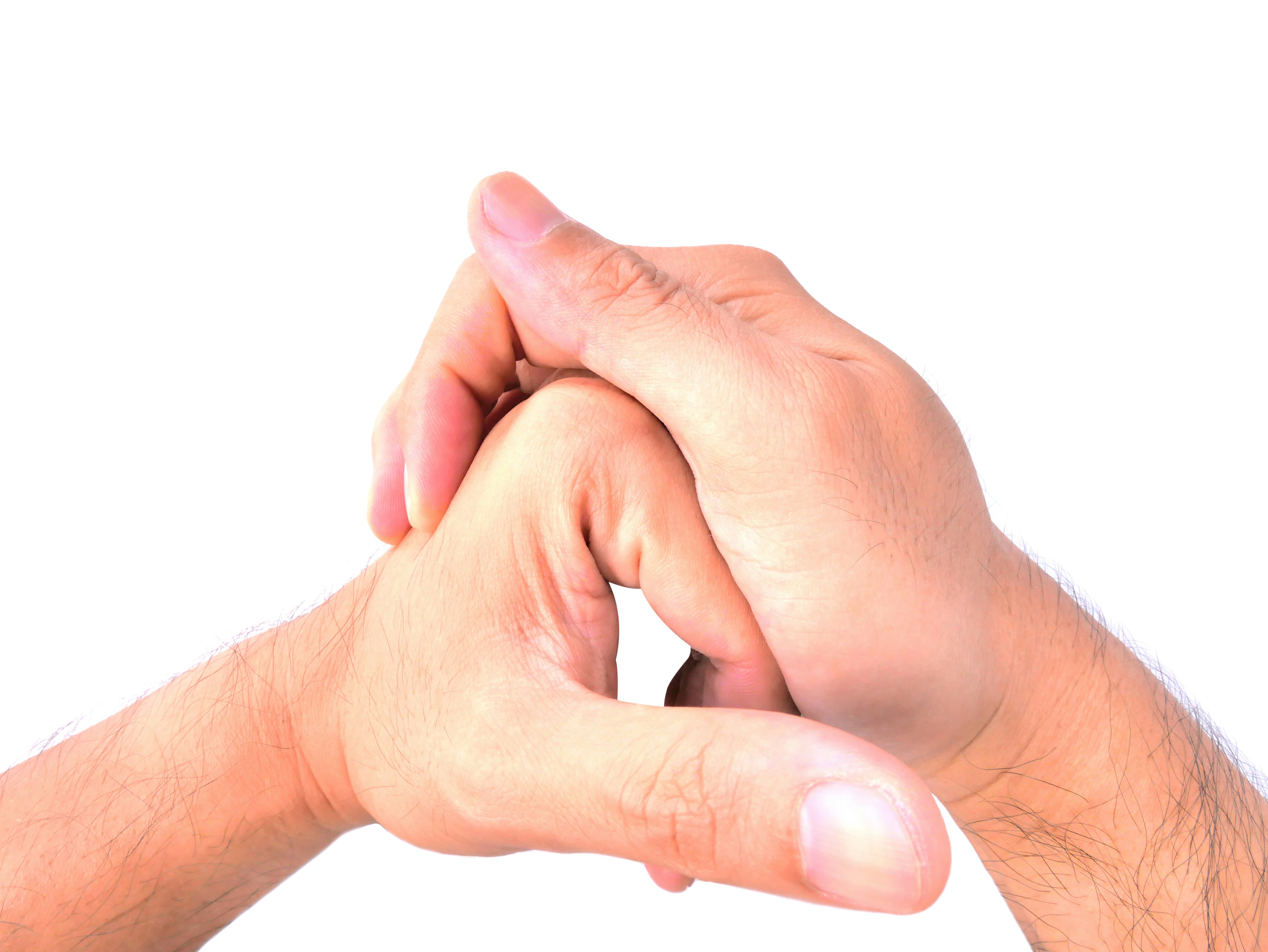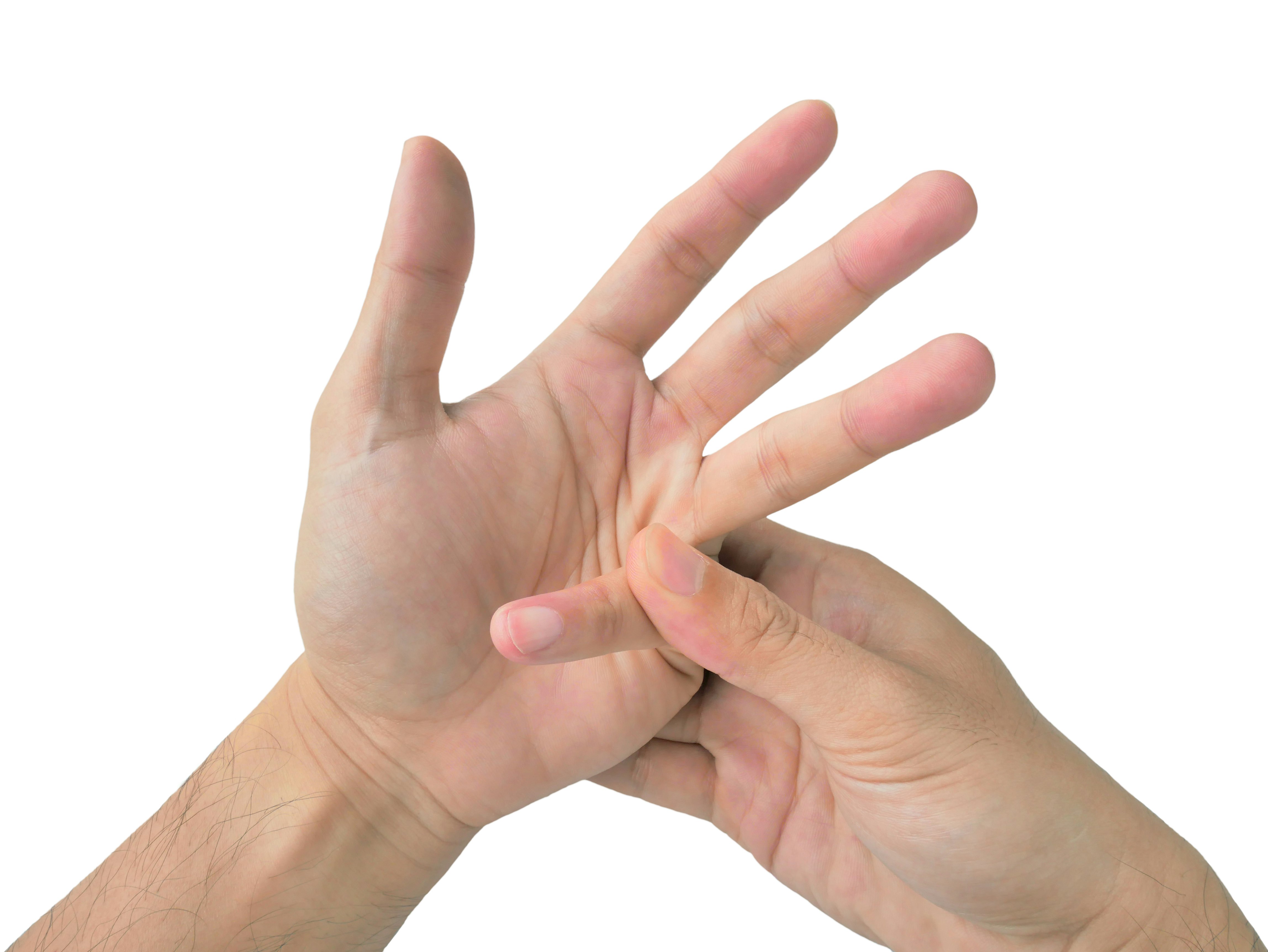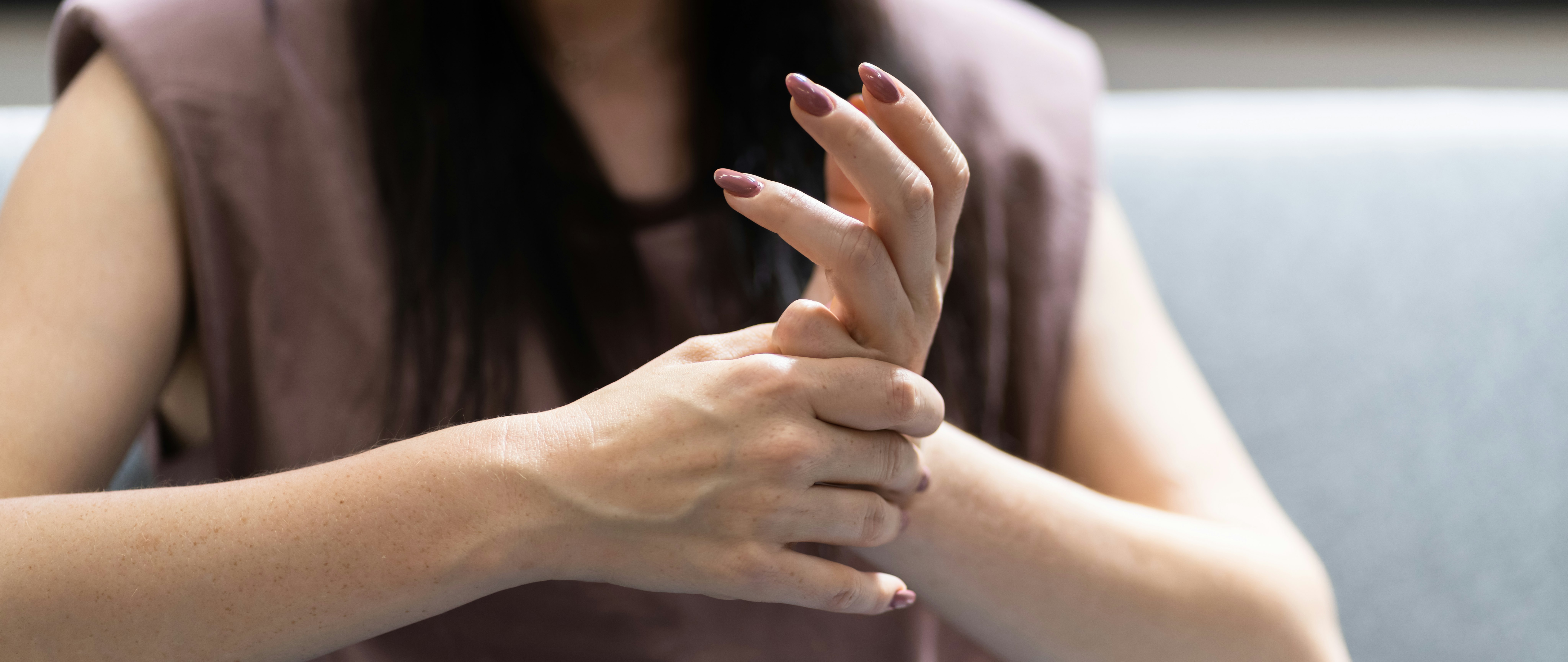
I have a routine for when I get home from work:
Crack each toe, then my ankles, both knees, pelvic bone (a particularly good one), twist-crack my lower back, both shoulders, my wrists, then each and every joint in my hands. As you might imagine, some people find this unbearable to be around, while others squeal with jealousy, craving the same satisfaction.
The latter group is larger than you might think: up to 54 percent of people are thought to regularly crack their fingers. The noise itself is caused by a process called “cavitation” within the joint, which is where gas bubbles form in the viscous, synovial fluid between the bones. Pulling the joint apart, as you do when you hyperflex a joint to make it crack, causes a decrease in the pressure in the synovial fluid, triggering any gases dissolved in the fluid to come out of the solution and coalesce into a bubble, or “cavity.” This bubble formation is what makes the cracking noise.

The tale is as old as time: cracking your joints is BAD FOR YOU! Growing up, my parents would tell me off for constantly cracking all my bones, saying that it would give me arthritis. Of course, I carried on cracking away, because my short-term satisfaction will always outweigh long-term health issues. But does cracking your joints actually cause long-term damage?
“Any links between joint cracking and conditions like arthritis are old wives' tales.”
According to Dr. Kira Capozzolo, a licensed Doctor of Chiropractic and health expert, no it doesn’t.
“Cracking joints is not bad for you unless done in a harmful way,” Capozzolo tells Inverse. “Cracking knuckles is rarely harmful, but on occasion, even a knuckle crack can be done wrong and lead to pain and inflammation and maybe even need a correction. Any links between joint cracking and conditions like arthritis are old wives' tales. There were some very basic studies done years ago, but they were not well done and have been generally disproven since.”

In fact, one study actually found an increased thickness of cartilage in the hand knuckle joints of those who cracked their knuckles, compared with those that did not crack their knuckles. Arthritis and other joint conditions are generally associated with the deterioration of cartilage, which is what causes pain in the joints, so these results suggest that at the very least, cracking doesn’t lead to arthritis.
“Think of cracking knuckles as sort of like flinging hair.”
This might be a testament to the levels of excitement I regularly experience, but cracking my joints is the highlight of my day. There is something so intensely satisfying about it; there’s almost a sense of massive achievement when you crack a joint that hasn’t been cracked for a while or find a new movement that cracks a new joint. But what is it about twisting our bones in weird directions until they snap that is so enjoyable?
“Often, it is ASMR or habit,” says Dr. Capozzolo. “Often, it is a way of stretching. People will crack their knuckles by outstretching their arms and stretching their fingers. It is a nice stretch when working, others simply crack knuckles out of habit. There are a lot of behaviors people do that have little application to practicality. I think of cracking knuckles as sort of like flinging hair. The biggest benefit is as a simple stress reliever. Like getting up and pacing, cracking knuckles is similar.”

As anyone who spends unhealthy amounts of time on YouTube will know, the internet also finds joint cracking very satisfying to watch. There are hoards of channels dedicated to watching chiropractors do their thing, and millions of people across the world flock to watch hot women in gym leggings have their bones cracked. These videos have a very ASMR-like quality to them, with the soft-spoken health chat and lo-fi white noise making for a relaxing and satisfying watch. However, the practice of chiropractic is somewhat controversial in the scientific community, with the legitimacy of its medical uses of being called into question.
Dr. Capozzolo, who is a chiropractor herself, says that chiropractic is only harmful if it’s performed by someone who hasn’t had the relevant training.
“When not done properly, it can be dangerous. Cracking a back or neck, when done wrong can lead to a lot of pain, damage and inflammation. I regularly have people come to me who can't turn their head or even are getting headaches that started with a friend thinking they could crack their neck for them.”
Many doctors take umbrage with chiropractic medicine and chiropractors, as they aren’t qualified M.D.s, and while they do undergo a lengthy period of study before becoming licensed, they are technically classified as practicing alternative medicine.
Dr. Joshua Carothers, the Chief Medical Officer at VIP StarNetwork, warns of the potential dangers that come with going to a chiropractor.
“Most patients that seek chiropractic care and maintenance treatments do so without incident or complication. There are, however, known complications that can arise from chiropractic manipulation of the spine and other areas of the body. Additionally, chiropractic training is not the same as that received by physicians in standard medical schools and residency training programs. This can lead to attempts to treat conditions with chiropractic care that would not be responsive to that care and which can lead to misdiagnosis and delays in treatment.”

Often, chiropractor influencers online combine their joint adjustment treatments with elements of other, more pseudoscientific medicine: “alkaline” diets, detoxing, herbal medicine, and even adjusting the spines of newborn babies — potentially seriously injuring them.
So, while the occasional homegrown joint cracking is probably absolutely harmless, don’t go putting your whole spine in someone else’s hands and let them knead you like bread dough without asking a qualified medical professional first. While those videos of neck cracking look like bliss, I won’t be letting just anyone twist my head around like Superman in that one film just in case my legs spontaneously stop working. Nobody will ever stop me from cracking my own knuckles, however.
So if you’re ever on a plane and hear a cacophony of joints snapping, sorry in advance.







